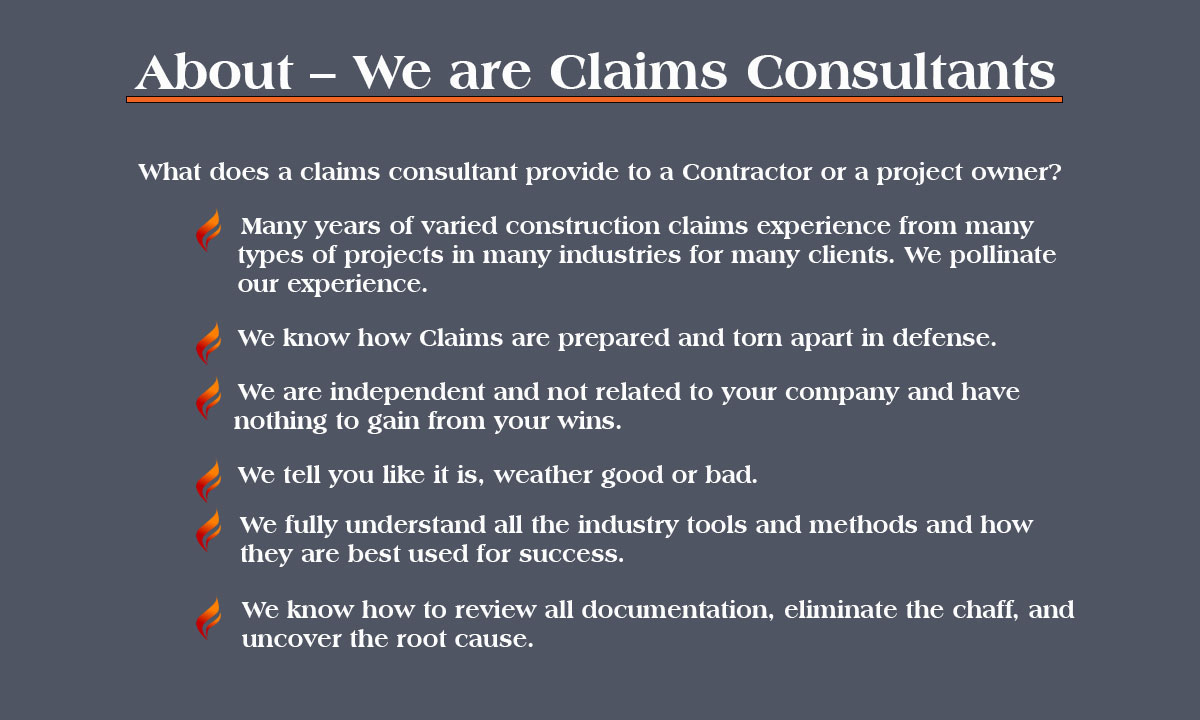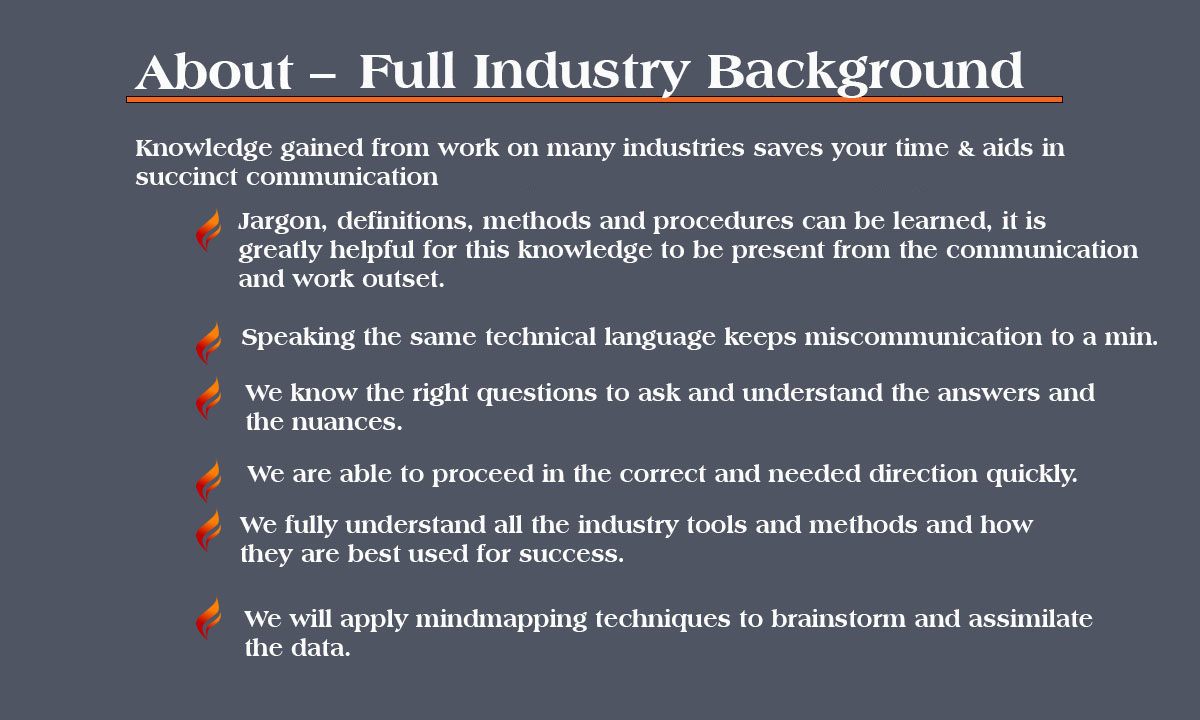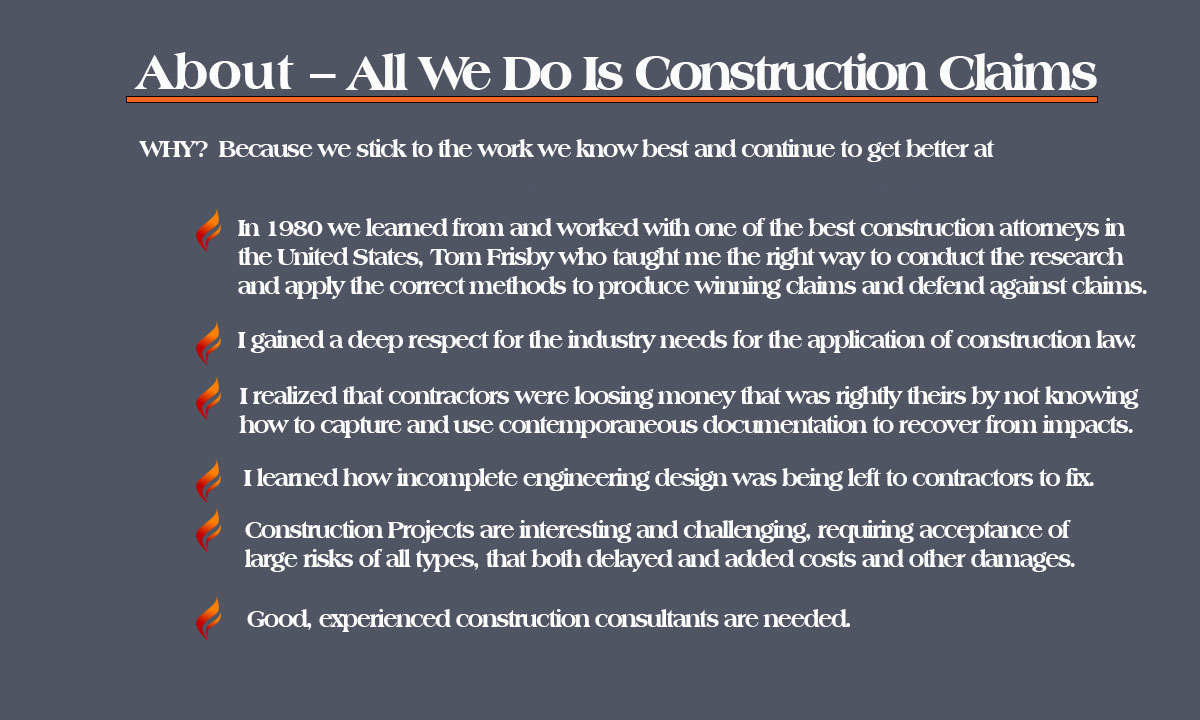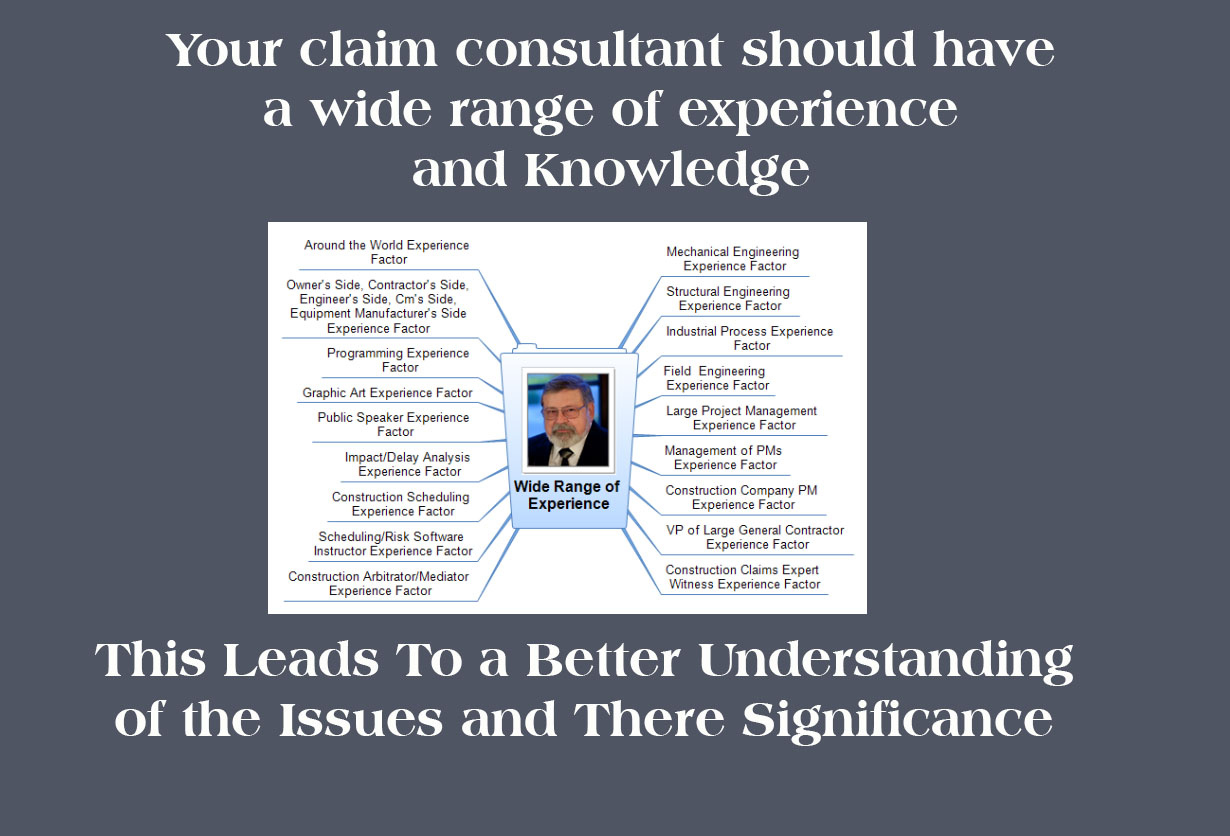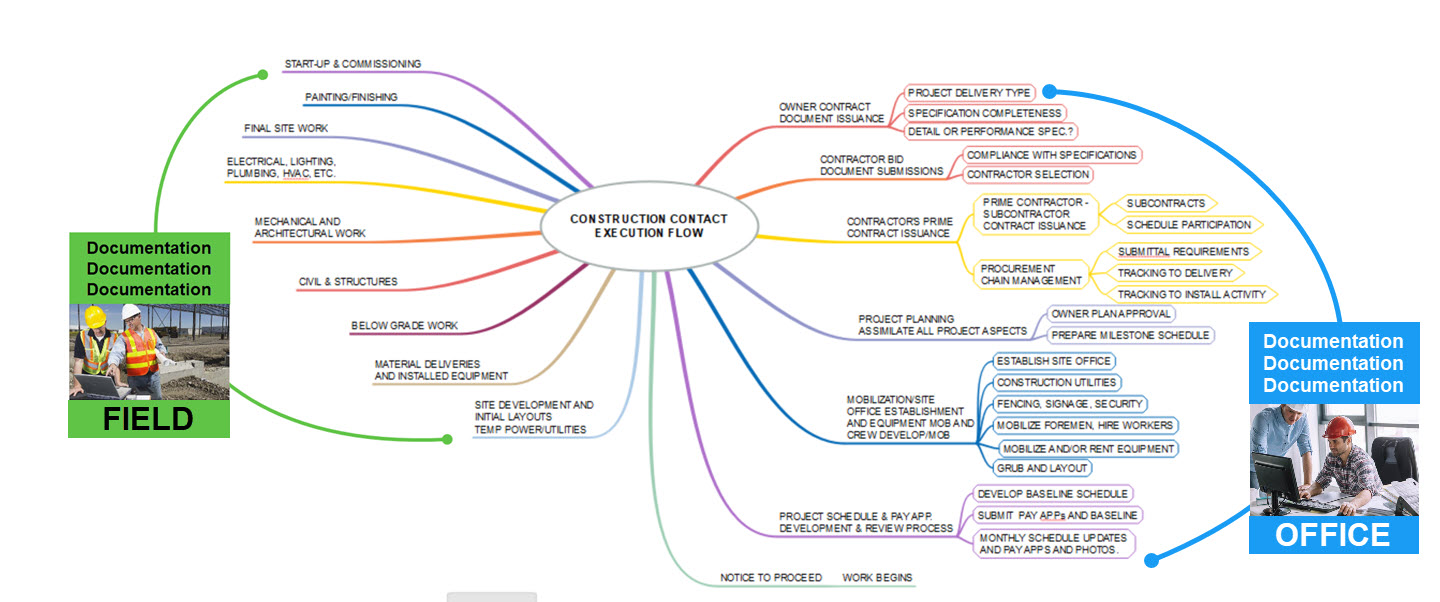LETS HELP YOU KNOW US AND WHAT WE BELIEVE
To protect against construction claims, consider the following strategies:
- Clear Contracts: Ensure your contracts are well-documented, detailing the scope of work, payment terms, and dispute resolution methods.
- Be vigilant constantly and take Photos and document
- Proactive Communication: Maintain regular communication with all parties involved to address issues promptly and prevent misunderstandings.
- Documentation: Keep detailed contemporaneous records of all communications, reports, and decisions made during the project to support your claims.
- Risk Management: Implement risk management strategies and risk register early in the project to identify potential issues and mitigate them before they escalate into claims.
- Regular Reviews: Conduct regular reviews of the project schedule and contract documents to ensure alignment and address any deviations promptly.
By following these practices, you can significantly reduce the likelihood of facing construction claims and maintain a smooth project lifecycle.
What Are the Types of Risk in Construction Projects?
In general, risk is anything that will delay the project or create further costs. There are many sources of risk on a construction site. To create a better risk management plan, it’s essential to know what risks there are, and where they will occur:
Safety Risk: Your crew is your most valuable resource. Nothing can be done without them. They are also subject to safety hazards, as many of the tasks assigned to them can be dangerous. While your crew is skilled and experienced, accidents can happen. Know the safety risks to your crew, what hazards they might fall prey to and create a safety plan to ensure employee safety.
Financial Risk: Without money, nothing happens. No one gets paid, you can’t rent equipment, you get the idea. That’s why any factors that can interrupt your cash flow need to be identified. This could include a cost increase for materials, competition in the market and so on. The more you understand the financial risk, the more likely you’ll stay within budget.
Legal Risk: Managing a construction project involves more than the constraints of time, cost and scope. There are legal constraints, such as regulations, code violations and contract terms disputes with your clients, vendors and subcontractors. Any of these things can send your construction project off track.
Project Risk: Project risks are universal project management risks associated with managing any project. These include poor management of the resources, missing deadlines and falling behind schedule. The construction project manager must be thorough and aware of difficulties that can throw the project off track.
Environmental Risk: AKA an “act of God,” such as floods, earthquakes and other kinds of natural disasters. Anything nature unexpectedly unleashes that makes the construction site inaccessible is costly and potentially destructive for a construction project.
The Construction Risk Management Process
The process of mitigating risk for a construction project is no different than any other project. The only difference is the type of risks you’re managing in the construction industry. Here are the five steps of the risk management process.
Identification: First, make a list of every possible issue that could arise. Do the research, talk to your crew and explore historical data from past construction projects that are like yours. While this identification list is always open for edits and updates, you should have a set deadline so that you don’t get bogged down in analysis.
Assessment: Not all risks are equal. Some are more likely to occur, others less so. One way to assess your list of risks is to use a risk assessment matrix, which charts the likelihood of each risk and the size of the impact it can have on your project. Creating a risk assessment matrix helps you when addressing the risk if it appears.
Planning: Once risks have been identified and prioritized based on their likelihood and potential impact, a construction risk management plan should be developed. This document will explain in detail how risks will be managed throughout the construction project.
Mitigation: This is where you implement a contingency plan that will alleviate the impact of the risks you identified earlier once they occur. The top priority, of course, is those you defined as highly likely and having the greatest impact. These should be associated with a risk owner, who will be responsible for ensuring risk mitigation.
Monitoring: The construction risk monitoring step is always ongoing, as you attempt to identify these risks when they show up, or you may also identify new potential risks as the construction project progresses. That includes monitoring the effectiveness of your mitigation plan. Also, stakeholders should be consulted and kept updated on these project risks. Engage other department leaders to help and empower the team to respond to risk. Have them note if a risk has moved to a different spot on your risk assessment matrix.
Reporting: Your construction risk management plan should be analyzed and shared with the crew and stakeholders. These reports on risk mitigation allow you to evaluate the effectiveness of the contingency plan. While this can be done with an Excel spreadsheet, using project management software is more efficient. Online tools gather the data automatically, create dashboards to illustrate progress and even generate reports that are easily distributed.
What Is a Construction Risk Management Plan? A construction risk management plan (CRMP) defines the strategies and procedures to identify, assess and mitigate construction risks. It acts as a roadmap so project managers and their teams can be proactive in addressing potential challenges to minimize how they impact the project’s timeline, budget and quality. This comprehensive document plays an important role in improving the chances of delivering a successful project.
- What Should Be Included in a Construction Risk Management Plan?
- When putting together a CRMP, be sure to include the following sections.
- Construction Risk Register
This detailed document outlines the risk categories to consider for the construction project. These may include financial, safety, environmental or legal risks. There are also external risks, like dealing with new stakeholders and their change requests. Those can wreak havoc on your construction risk management plan. Laws and local standards can change once you break ground, and the environmental analysis could be incomplete.
The risk register should identify risks, evaluate them and give them a rating, which combines probably and severity to help prioritize them. It should also include a risk owner, risk response strategies and contingency planning if unforeseen circumstances arise.
Construction Risk Matrix A construction risk matrix is a visual tool that helps assess and prioritize potential risks in a construction project. It helps the team focus on the most important risks that could have a significant impact on the project’s budget, timeline or quality. The X-axis represents the likelihood of the risk occurring while the Y-axis represents the impact or severity if the risk occurs.
Risk Response Actions These are strategies used to help identify risks in a construction project. The goal is to mitigate, transfer, avoid or accept the risk. For example, risk mitigation can include quality assurance and control procedures or regular safety training. Transferring a risk can include shifting the risk to a third party such as purchasing insurance policies. Avoidance may be design modifications and acceptance may be putting contingency funds aside to cover potential losses.
Risk Management Team This is the group responsible for identifying, assessing and mitigating risks that could impact the construction project. Members typically include a risk manager, project managers, subject matter experts and stakeholders. Once the risk has been identified and assessed, it will be prioritized and monitored as needed. This team is responsible for communicating information to relevant stakeholders to keep them informed of changes.
WE ARE
